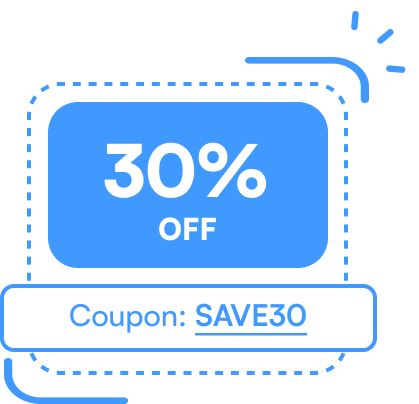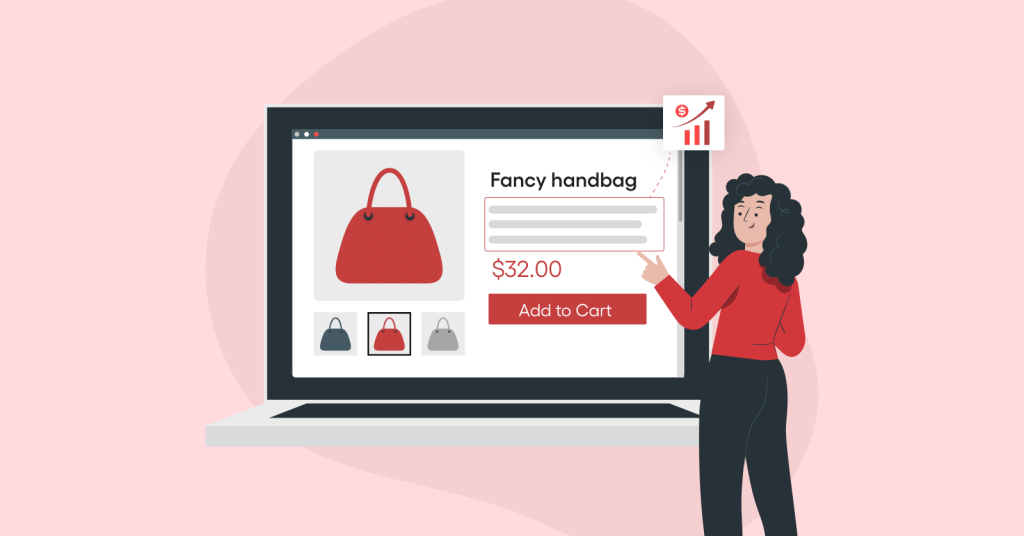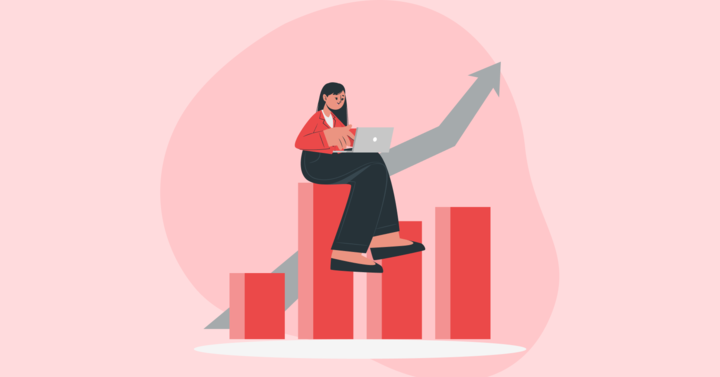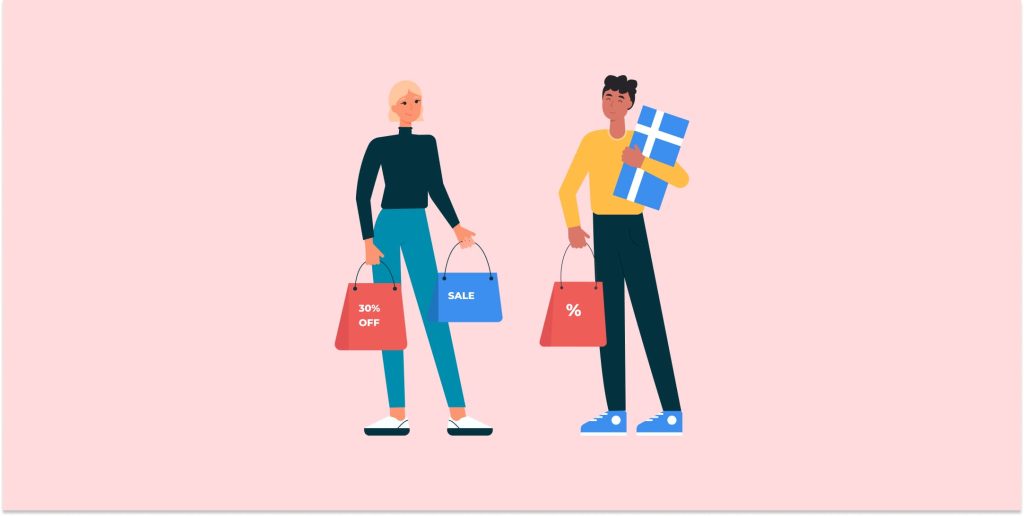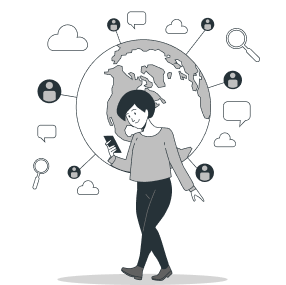Imagine you’ve just purchased your favorite pair of sneakers online. As you complete the checkout, a pop-up offers you a matching hoodie, and with a single click, it’s added to your cart — no hassle, no redirection to product pages. This is how a one-click upsell works!
It’s fast, seamless, and highly effective at driving additional sales.
But here’s the real question: How can you leverage this strategy to maximize your revenue without annoying your customers?
When done right, one-click upselling boosts your bottom line and enhances the customer experience. In this post, we’ll explore one-click upselling and, more importantly, nine proven strategies to help you increase your upsell sales.
Let’s dive in.
Create one-click upsell offers on your WooCommerce store using the UpsellWP plugin and increase AOV by up to 31%.
What is One-Click Upsell?
One-click upsell is a sales tactic that helps store owners offer additional products to customers with a single click during their initial purchase. This process maximizes the value of each transaction without annoying the customer’s experience.
Why One-Click Upselling Works?
One-click upselling works because it targets the customer’s existing interest and presents an opportunity for them to enhance or personalize their purchase. By strategically offering products that complement the original purchase, store owners can significantly increase their average order value (AOV) without needing high-pressure sales tactics.
The key appeal of one-click upsell lies in its simplicity — customers can easily accept an offer without having to re-enter payment details or go through a lengthy checkout process.
Examples of Upselling
Upselling happens more often than we realize, and we encounter it almost daily without even thinking about it.
Here are some common real-life instances where upselling takes place:
- When buying a new smartphone, retailers frequently offer you accessories like phone cases, screen protectors, or wireless chargers. Even though you didn’t initially plan to buy these, the offer seems tempting, and you might end up purchasing them at checkout.
- When purchasing a new car, you’re often offered an extended warranty. While you may not have planned on buying it, the salesperson makes a compelling case for the added peace of mind that comes with the extended coverage.
As we described in the example, you don’t always have to make an immediate decision to purchase additional accessories. The power of upselling is that it offers customers a convenient way to grab relevant products all in one go, without the hassle of making separate purchases.
For store owners, upselling doesn’t have to be complicated. One-click upselling makes it incredibly easy to display additional products to customers with just a single click.
By presenting the right offer at the right time, you can increase the average order value (AOV) and maximize each transaction.
How Can Upselling Be Beneficial to Customers?
Upselling isn’t just beneficial for businesses; when done correctly, it can provide a more rewarding and personalized shopping experience for customers.
By offering complementary products or upgrades, you can enhance the value customers receive, ultimately leading to greater satisfaction and loyalty.
Here’s how upselling can benefit your customers:
- Increase Sales and Revenue
Upselling can provide customers with better-quality or more feature-rich products, helping them make smarter purchasing decisions that offer long-term value. When they buy upgraded products, you can increase your sales.
- Enhance Customer Experience
Upselling can make the shopping experience more convenient by offering relevant, complementary items that improve their purchase.
For instance, when buying a camera, offering memory cards, lenses, or a tripod enhances the overall experience without the customer needing to search for those products separately.
- Boost Customer Loyalty
When upsells are thoughtfully curated and genuinely helpful, customers feel valued. By providing them with products that truly improve their experience, you build trust and increase the likelihood of repeat purchases.
Customers who feel their needs are understood are more likely to become brand advocates.
- Strengthen Your Brand
Consistently offering high-quality upsells helps establish a business as a reliable source of relevant and complementary products.
Customers come to trust the brand to meet their needs, not just for a single purchase, but for a range of products that enhance their lifestyle or goals.
- Increase Customer Lifetime Value
Upselling encourages customers to invest in long-term solutions.
For example, offering an extended warranty or service plan can give customers peace of mind, knowing that their purchase is protected over time. This leads to greater customer retention and satisfaction.
- Provide Options to Explore Other Products
Upselling introduces customers to products they may not have initially considered but that could genuinely enhance their purchase.
For example, after buying a laptop, a customer might be introduced to productivity software or accessories that improve their overall computing experience. This opens new doors for customers to explore and discover useful products.
9 Strategies to Increase Sales Using One-Click Upsell
Upselling is indeed one of the most effective sales techniques to increase your average order value (AOV) and boost customer satisfaction.
If you’re looking to take advantage of upselling in your business, here are several proven upsell sales ideas you can implement:
1. Personalize the Upsell Offer
- Why It Works: Personalized offers are far more likely to convert. By analyzing customer behavior, purchase history, and preferences, you can tailor highly relevant upsell offers.
- How to Implement: If a customer buys a laptop, offer them a laptop case, a mouse, or even a software upgrade—items that complement their purchase. Use data from previous purchases or browsing habits to make the upsell more enticing.
2. Use Bundling and Package Deals
- Why It Works: Customers are more likely to accept an upsell if they feel they are getting a “deal” or extra value by purchasing a bundle.
- How to Implement: Offer packages that combine related products at a discounted rate. This gives customers the perception of value while making their decisions easier.
- Example: After purchasing a smartphone, offer a “complete mobile bundle” with a screen protector, case, and headphones for a slightly reduced price when purchased together.
3. Offer Limited-Time Discounts or Promotions
- Why It Works: Creating urgency with limited-time offers can prompt customers to act quickly and complete the upsell purchase. Fear of missing out (FOMO) encourages quicker decision-making.
- How to Implement: Display a countdown timer or use phrases like “Only available for the next 15 minutes” to create a sense of urgency.
- Example: After a customer buys a video game, offer a “special offer” for downloadable content (DLC) at a 20% discount for the next 10 minutes.
4. Show the Benefits of the One-click Upsell
- Why It Works: Customers are more likely to accept an upsell if they understand how the additional product will benefit them directly.
- How to Implement: Clearly communicate the added value of the upsell. Whether it’s a feature enhancement, extended warranty, or complementary accessory, ensure the customer sees the benefit of the additional item.
- Example: If a customer buys a television, offer them a premium sound system or wall mount. Emphasize how it will improve their viewing experience.
5. Optimize the Upsell Timing
- Why It Works: Presenting the upsell at the right moment increases the chances of conversion. If the offer appears too soon, the customer may feel overwhelmed; too late, and they may have lost interest.
- How to Implement: Present your upsell immediately after the customer completes their purchase or at the point of checkout when they’re already emotionally committed to the transaction.
- Example: After a customer adds a pair of shoes to their cart, offer them a shoe cleaning kit as a one-click upsell before they proceed to checkout.
6. Leverage Social Proof and Customer Reviews
- Why It Works: Social proof increases trust and helps persuade customers to make additional purchases. If they see that others have enjoyed or benefited from the upsell product, they’ll be more likely to consider it.
- How to Implement: Display positive reviews or testimonials of the upsell product on the same page as the offer.
- Example: After purchasing a set of headphones, show reviews or testimonials about a matching headphone stand or storage case, reinforcing the value of the upsell.
7. Offer Free or Low-Cost Shipping for Upsell Products
- Why It Works: Shipping costs are a significant factor in a customer’s decision to purchase. By offering free or discounted shipping on upsell items, you make the additional purchase feel even more worthwhile.
- How to Implement: Provide an incentive like “Free shipping on your accessory bundle” to encourage customers to accept the upsell.
8. Simplify the Checkout Process
- Why It Works: The easier the upsell process, the more likely customers will accept it. Complicated steps can deter customers from taking the offer.
- How to Implement: Use a seamless checkout process where the upsell option is a simple order bump. The goal is to make the upsell decision feel natural and easy to accept.
- Example: After a customer buys a set of headphones, present the upsell as a simple checkbox that automatically adds a matching carrying case to the cart without requiring additional information.
9. Test and Optimize
- Why It Works: Regular testing helps identify what types of upsell offers resonate best with your audience, improving your sales strategies over time.
- How to Implement: A/B tests different upsell offers, layouts, and messaging to see which ones lead to higher conversion rates.
- Example: Test different upsell products—such as accessories vs. product upgrades—to see which performs better with different customer segments.
Tip: If you build your store on the WooCommerce platform, I have a detailed guide on one-click upselling specifically for this platform.
Check here: How to create one-click upsell offers in WooCommerce?
Create Pre-Purchase and Post-Purchase Upsell Offers on WooCommerce Using the UpsellWP Plugin and Boost Your Sales.
Conclusion
One-click upselling is a powerful tool for increasing sales and improving the customer experience.
By personalizing offers, bundling products, using urgency, and providing clear benefits, you can significantly boost your average order value and create a more satisfying shopping experience for your customers.
Implementing these strategies can turn casual shoppers into loyal customers while maximizing revenue for your business.
Also Read:
1. How to Create a WooCommerce Order Bump to Increase AOV?
2. 5 Effective Places to Show Cross-Sell Products in WooCommerce
3. 7 Best WooCommerce Upsell Plugins To Boost Order Value (2024)
Frequently Asked Question
The one-click upsell funnel for WooCommerce is a sales strategy that allows store owners to offer additional products or upgrades to customers immediately after they make a purchase.
Using WooCommerce, this process is streamlined so that customers can add these products to their order with just one click, without re-entering payment details. This funnel helps increase average order value (AOV) by presenting relevant, complementary products at the point of purchase.
You can use one-click upsell to enhance your store’s average order value.
By default, WooCommerce doesn’t support this feature, so you can install a plugin like “UpsellWP,” which comes with multiple features and order bumps to display your upsell offers on the checkout page.

